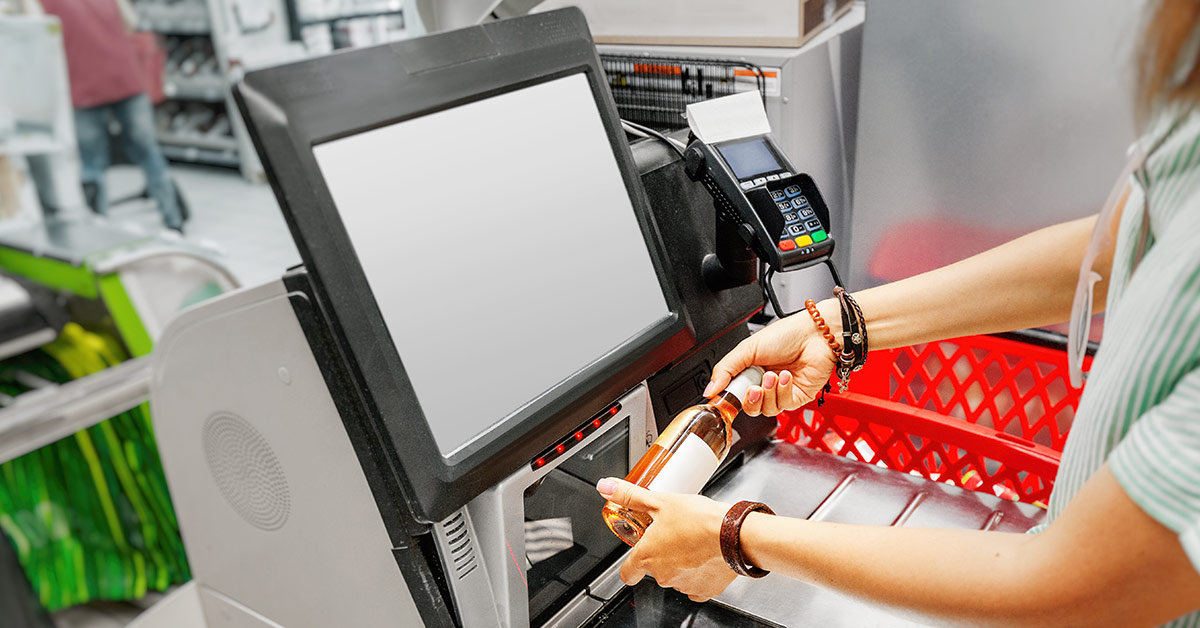Self-checkout, yes or no? People tend to be divisive on this issue; some use it all the time, and some never do. And for some, it depends on how many items they are buying, using self-checkout for short shopping lists. Meanwhile, some individuals specifically avoid it because they believe that they are taking jobs from human cashiers.
“A lot of people do see self-checkout as a threat to workers,” said Sylvain Charlebois, a professor at Halifax-based Dalhousie University specializing in food distribution and policy. “That’s probably why the debate is so emotional for a lot of people.”
Self-checkout vs cashiers
According to Statista, as of December 2019, 47% of consumers in the United States reported using self-checkout regularly. Additionally, 31% of consumers have used it but not regularly. Meanwhile, 20% don’t use it, with varying levels of interest, including none at all.
There’s also an age discrepancy with these numbers, with people over 55 more likely to use cashiers. This could be because the technology may seem daunting, and if the machines make a mistake, it’s less likely these people will use it again next time. However, younger consumers tend to use self-checkout. “Why would I wait 10 minutes, maybe more, when I can check myself out in 30 seconds?” said 34-year-old Matthew Easter to BBC News. “It’s a more convenient option, especially if you’re a busy person.“
There’s also a perk in avoiding human interaction, or more specifically, human judgment. For example, Ryan Buell, an assistant professor at Harvard Business School, explained a study where a liquor store switched to self-checkout stations and discovered that “the market share of difficult-to-pronounce items increased 8.4%”.
“The researchers concluded that consumers might fear being misunderstood or appearing unsophisticated in front of the clerks,” Buell said. “Changing to self-service removed the social friction.”
Buell also added a pizza chain that offered to order online. “The customers who were ordering online ordered food with 3% more calories, and also gave 14% more [special] instructions compared with the average purchase over the phone. They concluded that customers’ desire to avoid negative judgment of their eating habits drove the change.”
Source: BBC
Read: Senior Loneliness: Some Seniors Go a Week Without Talking To Anyone
Is technology stealing jobs?
Some people accept that these machines are part of the shift toward technology. “There’s always going to be progress. There’s always going to be technology that’s going to come along to make things better, smarter, faster,” said Easter.
Source: BBC
Still, some would rather have human interaction with cashiers and disagree with forcing customers to do their job, technological progress or not. Additionally, the “faster” argument is debatable. Often, self-checkout feels faster because the shopper is actively involved in the process, as opposed to waiting idly.
All in all, the self-checkout experience depends on the particular machine. Some are more user-friendly, while some are more prone to frustrating hiccups, like scanning an item twice, not accepting a coupon, or refusing a perfectly working credit card.
Interestingly, Walmart is a chain that added more self-checkouts to their stores, and they report no job losses as a result. Instead, their employees were reassigned to other roles, like customer support for the self-checkout machines. But this happy ending isn’t always the case. Canadian grocery chain Metro and Loblaw had announced their intentions to increase self-checkouts in certain stores to help offset the higher cost of minimum wage jobs.
Similarly, the World Economic Forum’s 2018 Future of Jobs report cashier positions, among many other jobs being replaced with technology, are “expected to become increasingly redundant” over the coming years. The study adds that this job loss will be compensated as new positions emerge. However, according to a report from the Canadian Broadcasting Corporation, it’s unclear what these new jobs will be and what will happen to minimum-wage workers. For instance, self-checkout kiosks have already created positions, such as repair jobs, manufacturing jobs, and of course, people to assist customers with the machines.
What comes next?
It’s unclear what the future holds for self-checkout, but it’s unlikely they are going anywhere anytime soon. However, it’s unlikely that cashiers will disappear either, at least for now. People enjoy having the option, based on their preferences, mood, or shopping list. Now that people are becoming accustomed to having the choice, stores that lack one type of service may lose potential customers. After all, the Forbes 2021 State of Self-Checkout Experiences report discovered that the majority of one thousand servers base their shopping habits around the option of self-checkout.
Keep Reading: You Actually Only Need to Work 8 Hours per Week
Sources:
- “Automated checkout usage and interest in the U.S. as of 2019.” Statista Research Department. May 14, 2020
- “Should cashiers be humans or machines?.” BBC. Bryan Lufkin. May 13, 2017
- “The unpopular rise of self-checkouts (and how to fix them).” BBC. Adriana Hamacher. May 10, 2017
- “Machines vs. cashiers: Why shoppers are so divided over self-checkout.” CBC. Sophia Harris. February 17, 2019
- “How Self-Service Checkouts Can Improve The In-Location Experience.” Forbes. Bobby Mahamat. March 15, 2021

